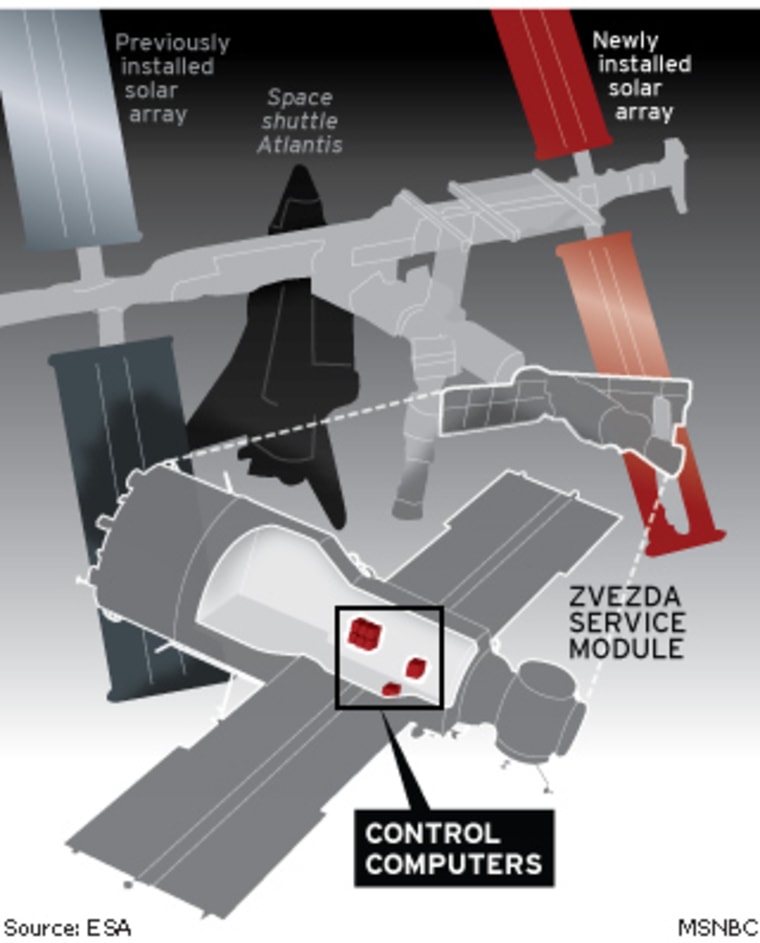A revived set of crucial computers aboard the international space station underwent one more test Monday before they are given a clean bill of health so shuttle Atlantis can return home.
The test will help determine if two Russian computers are ready to control the space station's orientation as Atlantis managers decide whether the shuttle should spend another day at the outpost.
During a computer meltdown last week, the shuttle's thrusters were used to help the station maintain its position. The station's thrusters haven't been used since.
"That's a big step in our checkout of the computers to make sure everything is working correctly," flight director Holly Ridings said Monday. "It's one of those things we want to see before we undock."
Atlantis is set to undock on Tuesday and land Thursday in Cape Canaveral, Fla. The shuttle has been at the space station since June 10.
The computers, which also control oxygen production, crashed last week. All six of the computers' processors were back online Saturday. The two processors that took longer to revive are now on standby mode and can be used if needed.
Except for an oxygen generator, all the space station systems that were powered down when the computers failed are now running.
During Monday's test, the space shuttle's thrusters took control of the joined craft so it could change positions to dump waste and water. Afterward, the Russian thrusters will take over. During a second part of the test, U.S. computers will send commands to the Russian thrusters.
Also Monday, Atlantis' crew was to finish packing the shuttle for its return trip to Earth. The shuttle and space station crews were set to say their goodbyes before hatches between Atlantis and the outpost are closed in preparation for Tuesday's undocking. They were given some free time Monday morning to enjoy the view on their last full day in space.
On Sunday, shuttle astronauts completed the fourth and final spacewalk of their mission to continue the construction of the space station.

During a nearly 6 1/2-hour spacewalk, astronauts Patrick Forrester and Steven Swanson activated a rotating joint _ their top priority _ on the outpost's newest segment so a new pair of solar wings can track the sun and provide power to the station. The solar arrays were delivered to the space station by Atlantis.
The astronauts also set up a new camera stanchion outside the station's newest segment and a computer network cable between the U.S. and Russian sides of the outpost. They were not able to bolt down a problematic debris shield and instead secured it in place.
Early Monday, flight controllers successfully gave the rotating joint a small test by moving it 5 degrees. During a more thorough test later in the morning, the joint began rotating automatically, allowing the solar arrays to track and sun and provide power to the station.
"The checkout went really well last night," Mission Control told the astronauts Monday morning.
U.S. astronaut Sunita Williams spent her last full day in space showing the ropes to her replacement at the space station, U.S. astronaut Clay Anderson. She thanked flight controllers on the ground for their work during her more than six months in space in which she set a record for the longest single spaceflight by a woman.
"I'm sad to say goodbye but that means progress is being made and it's time for the international space station to grow a little more," said Williams, her voice cracking with emotion. "The (space station) will always be a part of me."